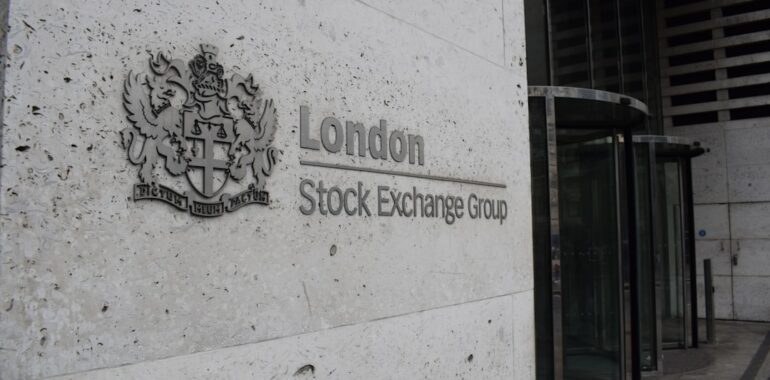Top 5 Worst Stock Short Squeezes in History: Insights from GameStop and Beyond

Discover the most notorious stock short squeezes in history, including the GameStop phenomenon, and learn how these events have shaped the financial markets.
Understanding Stock Short Squeezes
A stock short squeeze is a market phenomenon where the price of a heavily shorted stock rises rapidly, forcing short sellers to buy shares to cover their positions, further driving up the price. This creates a feedback loop that can lead to significant volatility and substantial financial losses for those caught in the squeeze. Throughout history, several high-profile short squeezes have left lasting impacts on both companies and investors.
1. The Piggly Wiggly Short Squeeze (1923)
What Happened?
In 1923, Clarence Saunders, the founder of the first self-service grocery store, Piggly Wiggly, faced a severe short squeeze. After the company’s stock was heavily shorted, Saunders rallied by purchasing large quantities of shares using his personal funds and a $10 million loan from bankers. This aggressive buying strategy increased the stock price by approximately 50%.
By March 1923, Saunders controlled nearly all of Piggly Wiggly’s outstanding shares, leaving only 1,128 shares available on the market. The New York Stock Exchange (NYSE) temporarily suspended trading, allowing short sellers to buy back the remaining shares to cover their positions. Despite his efforts, Saunders accumulated massive debt and was eventually forced to declare bankruptcy, relinquishing control of the company.
2. Volkswagen vs. Porsche Short Squeeze (2008)
What Happened?
In October 2008, Porsche revealed that it had acquired control of 74% of Volkswagen’s voting shares. At the time, approximately 12.5% of Volkswagen stock was on loan to short sellers. This announcement triggered a massive short squeeze as short sellers scrambled to cover their positions, driving Volkswagen’s share price from €348 to an astonishing €999 within days.
The surge made Volkswagen temporarily the most valuable company in the world. Porsche’s CEO, Wendelin Wiedeking, faced charges of market manipulation, although they were later dropped. The event highlighted the immense power dynamics between large corporations and short sellers in the stock market.
3. The Herbalife Short Battle (2012-2018)
What Happened?
In December 2012, hedge fund manager Bill Ackman publicly shorted Herbalife, branding it a pyramid scheme poised to collapse. Ackman committed $1 billion to this short position, inviting scrutiny and skepticism. In response, rival hedge fund manager Carl Icahn took a 26% stake in Herbalife, challenging Ackman’s assertions.
Over the ensuing years, Herbalife’s stock price continued to rise, forcing Ackman to cover his short position in February 2018 at a substantial loss. Meanwhile, Icahn’s investment yielded significant profits, demonstrating the volatile nature of stock short squeezes and their ability to turn high-stakes financial battles into lessons for the investment community.
4. Tesla’s Stock Price Rally (2020)
What Happened?
In August 2020, Tesla’s shares experienced a dramatic increase, soaring from around $300 to nearly $450 within a short period. This rally was attributed to several factors, including the company’s growing popularity in electric vehicles, impending inclusion in the S&P 500, and a five-for-one stock split announcement.
However, the primary driver was the intense short interest in Tesla’s stock. As positive news and strong financial reports emerged, short sellers faced mounting losses, leading to increased buying activity to cover their positions. By the end of the year, Tesla’s stock price surge resulted in approximately $40 billion in losses for short sellers, marking one of the most impactful short squeezes in recent history.
5. The GameStop Surge (2021)
What Happened?
Perhaps the most famous recent example, the GameStop short squeeze, originated on the Reddit community r/WallStreetBets. In January 2021, retail investors collectively bought GameStop shares, driving the price from around $17 to nearly $500. At the time, about 140% of GameStop’s available shares were shorted, creating a precarious situation for short sellers.
As the stock price surged, short sellers were forced to buy shares to cover their positions, further inflating the price. The involvement of platforms like Robinhood, which limited trading during the peak of the squeeze, sparked widespread debate and investigations into market manipulation and the influence of social media on stock prices.
The Impact of Stock Short Squeezes on Financial Markets
These high-profile stock short squeezes have underscored the volatility and unpredictability inherent in financial markets. They have highlighted the potential for significant losses among short sellers and the power of collective retail investors. Moreover, these events have prompted regulatory reviews and discussions about market fairness and the influence of social media on trading behaviors.
Understanding these historical short squeezes provides valuable insights into market dynamics and the delicate balance between different types of investors. As markets continue to evolve, the lessons learned from these events remain crucial for both individual investors and financial institutions.
Interested in diving deeper into the world of stock short squeezes and staying updated on the latest market trends? Visit Superstonk to join a community of informed investors and access exclusive resources.




